Last updated: June 22, 2023
Article
50 Nifty Finds #28: Shuttering in the Cold
National Park Service (NPS) naturalist Natt N. Dodge spent most of his 30-year career at national parks and monuments in the Southwest. The photographs and motion picture films he created were used in NPS educational programs, pamphlets, and exhibits (often uncredited) for many decades. The books he wrote and illustrated on natural history topics forever link him to desert ecosystems. It may seem surprising, then, that some of the most interesting photographs in his personal collection are of glaciers, crevasses, mountain climbers, and other winter scenes at Mount Rainier National Park.
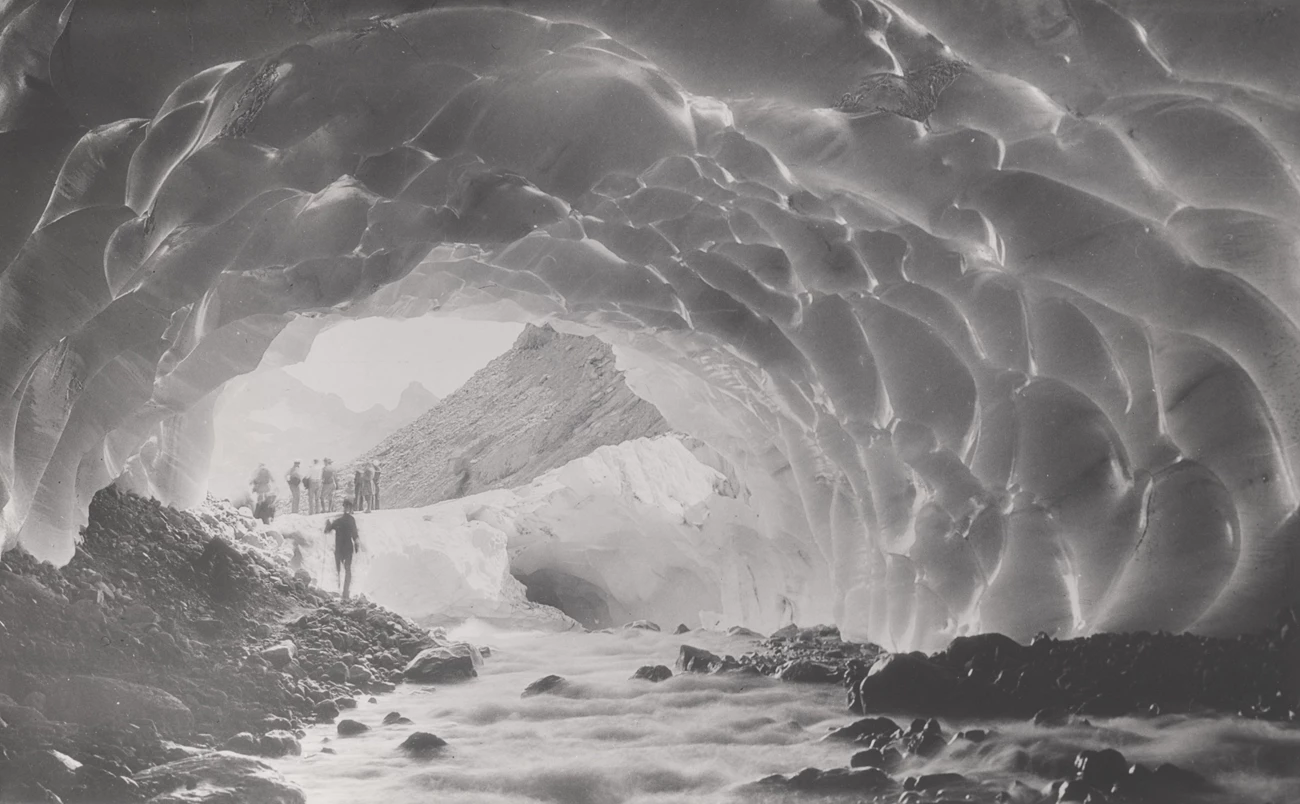
Natt Noyes Dodge was born on August 23, 1900, in South Chatham, Massachusetts. His parents were Frank P. Dodge and Florence Griffin Dodge. After spending his early years in Connecticut, he moved to Colorado, where he attended the Boulder Prep School. He served as a private in the US Army during World War I from October to December 1918.
Dodge met Mildred “Hap” Nellie Johnson when they attended Boulder Prep School. She went to the University of Colorado, graduating with a degree in education in 1922. He attended Colorado Agricultural College, where he was yearbook editor and a member of the debate team. Their courtship lasted several years before their engagement was announced in January 1924. They married in Niwot, Colorado, on June 15 that year, two days after his college graduation. The Dodges went on to have three children: Nattalie (born 1926), Griffin (born 1932), and Judith (born 1940).
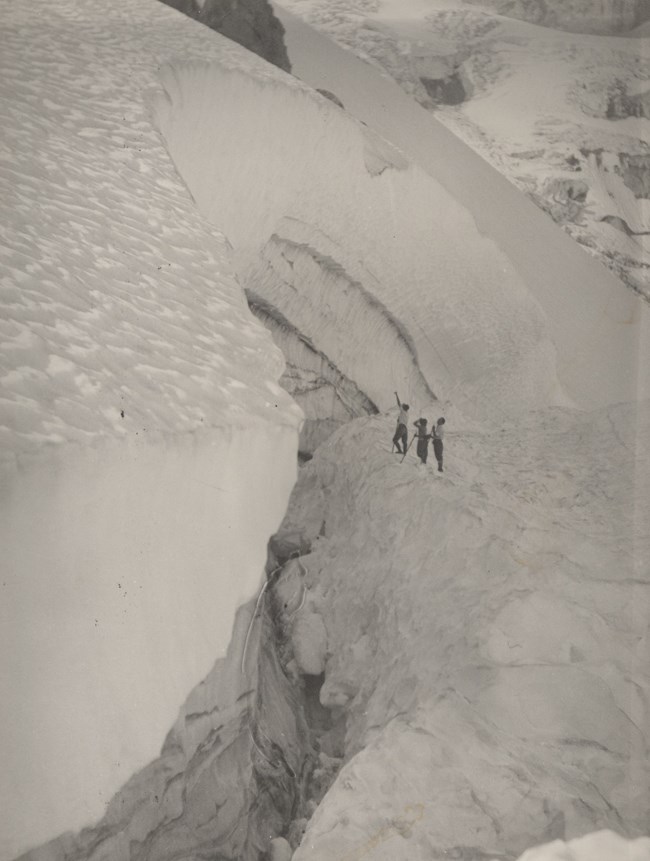
Following their honeymoon, they moved to Seattle, Washington, where he worked as a clerk and salesman for the Superior Honey and Bee Supply Company. Dodge began his writing career around 1926, contributing articles to Bees and Honey magazine and assisting its editor. The earliest known publication of Dodge’s photographs was in the November 1926 edition of Bees and Honey, which called him an “excellent amateur photographer.” Dodge also wrote freelance magazine articles published by Sunset, Desert Magazine, The Mid-Pacific Magazine, and others in the 1920s and 1930s.
In the late 1920s he became foreman for the Pacific Slope Honey Company. While working for them, Dodge suggested to the American Honey Institute that they provide honey to Commander Richard E. Byrd “as the sweetening agent with which to maintain the strength and energy of his men” on his first South Pole expedition. Dodge’s suggestion resulted in a cooperative effort with New Zealand beekeepers providing “a use for honey never before available.” Five hundred pounds of honey was among the expedition’s provisions.
Dodge joined the NPS as a ranger-naturalist at Mount Rainier National Park in 1932. In a 1964 oral history he recalled,
I came on as a seasonal ranger-naturalist, due to the fact that the company I had been with had failed under the Depression conditions. I was desperately looking for something to do, and Frank [Brockman] very kindly took me on as a ranger-naturalist. I spent the summers of 1932, 1933, and 1934 as a ranger-naturalist at Mt. Rainier National Park.
During his three summers, he frequently contributed poems or short natural history articles to the park’s Nature Notes newsletter.
Dodge was also an experienced mountain climber and winter sports enthusiast, providing him opportunities to take photographs in many areas of the park. He photographed glaciers, crevasses, and summit parties, skiing events, landscapes, hiking tours, and wildlife. He tried his hand at night photography and may have had a motion picture camera as well.
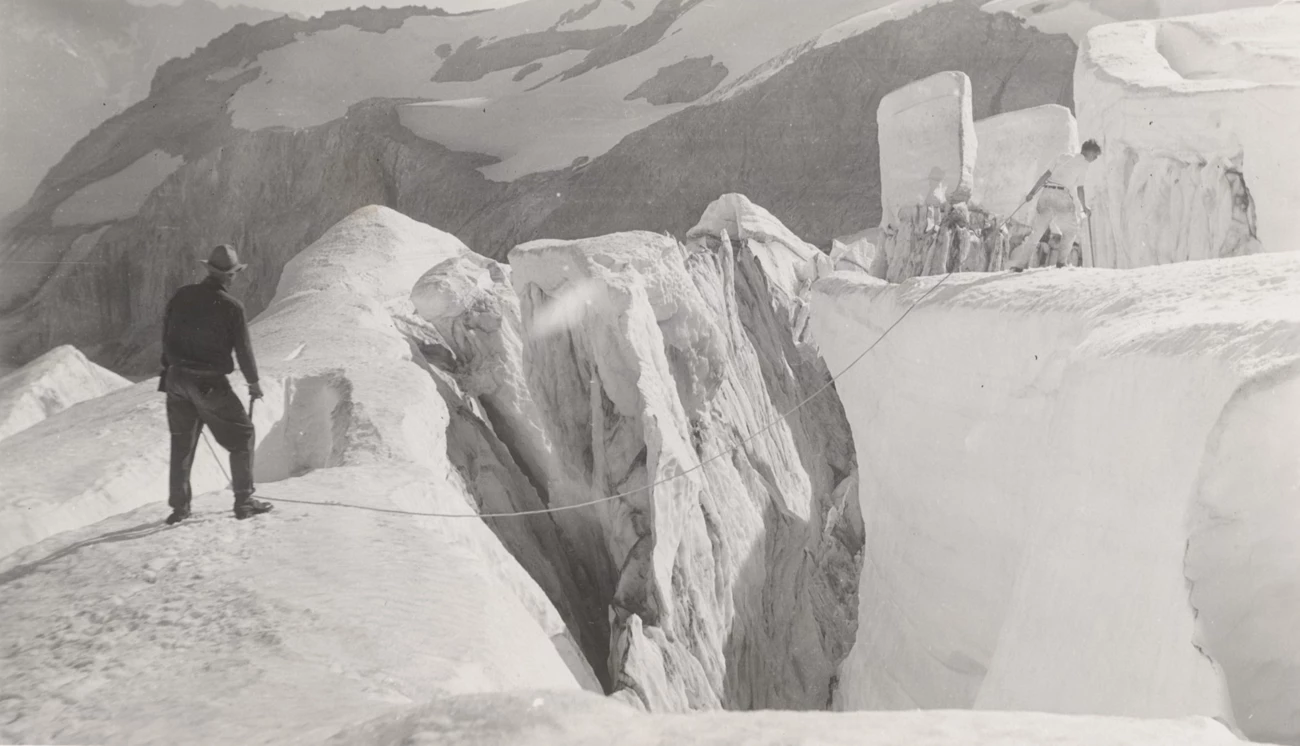
With thousands of other applicants, Dodge took the junior naturalist civil service exam in 1933. According to Hap Dodge, 900 men passed the test, and his was the 15th highest score. He was offered a ranger position at Mount McKinley (now Denali) National Park. He recalled, “I had two very small youngsters. I couldn't see going up into that cold climate, so I turned down thatJob. The next one that came along was an offer of a ranger job at Grand Canyon National Park, which I accepted I believe as of April 5th, 1935.”
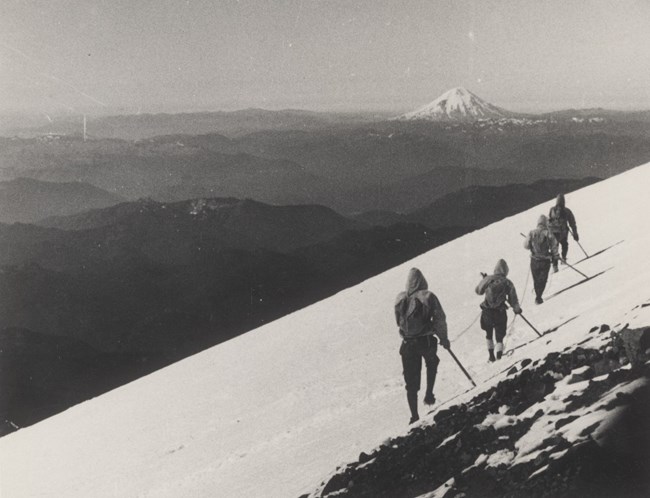
The family moved first to the South Rim where Dodge worked at the entrance station and information desk. Soon a job opened on the North Rim, and they relocated. Hap Dodge taught daughter Nattalie and Zorro Bradley, son of an NPS engineer at the park, in their kitchen tent on the North Rim. Childhood friends Nattalie and Zorro eventually married in November 1948. Nattalie, who held a degree in chemistry with minors in mathematics and physics, worked for a time at Los Alamos Scientific Laboratory developing the triggering mechanisms for nuclear weapons. She transferred to Sandia Secret Weapons Base in Albuquerque, New Mexico, while Bradley worked on his degree in archeology after his service in World War II. His studies were interrupted when he was recalled to active duty in Korea. He finally graduated in 1953 and joined the NPS. Nattalie gave up her job and became a Park Service spouse, moving with her husband for his assignments at Wupatki, Tuzigoot, Canyon de Chelly, and Chaco Canyon national monuments; Mesa Verde National Park; the regional office in Santa Fe; Jefferson National Expansion Memorial; Russell Cave National Monument; NPS headquarters in Washington, DC; and finally to Alaska in 1972.
While working at Grand Canyon, Natt Dodge wrote two natural history booklets, Trees of the Grand Canyon and Reptiles and Amphibians of the Grand Canyon. He continued to take photographs, many of which are part of his personal collection in the NPS History Collection. His reputation as a photographer grew. In 1937 two of his photographs of hummingbirds on their nest on the North Rim were published in Life magazine.
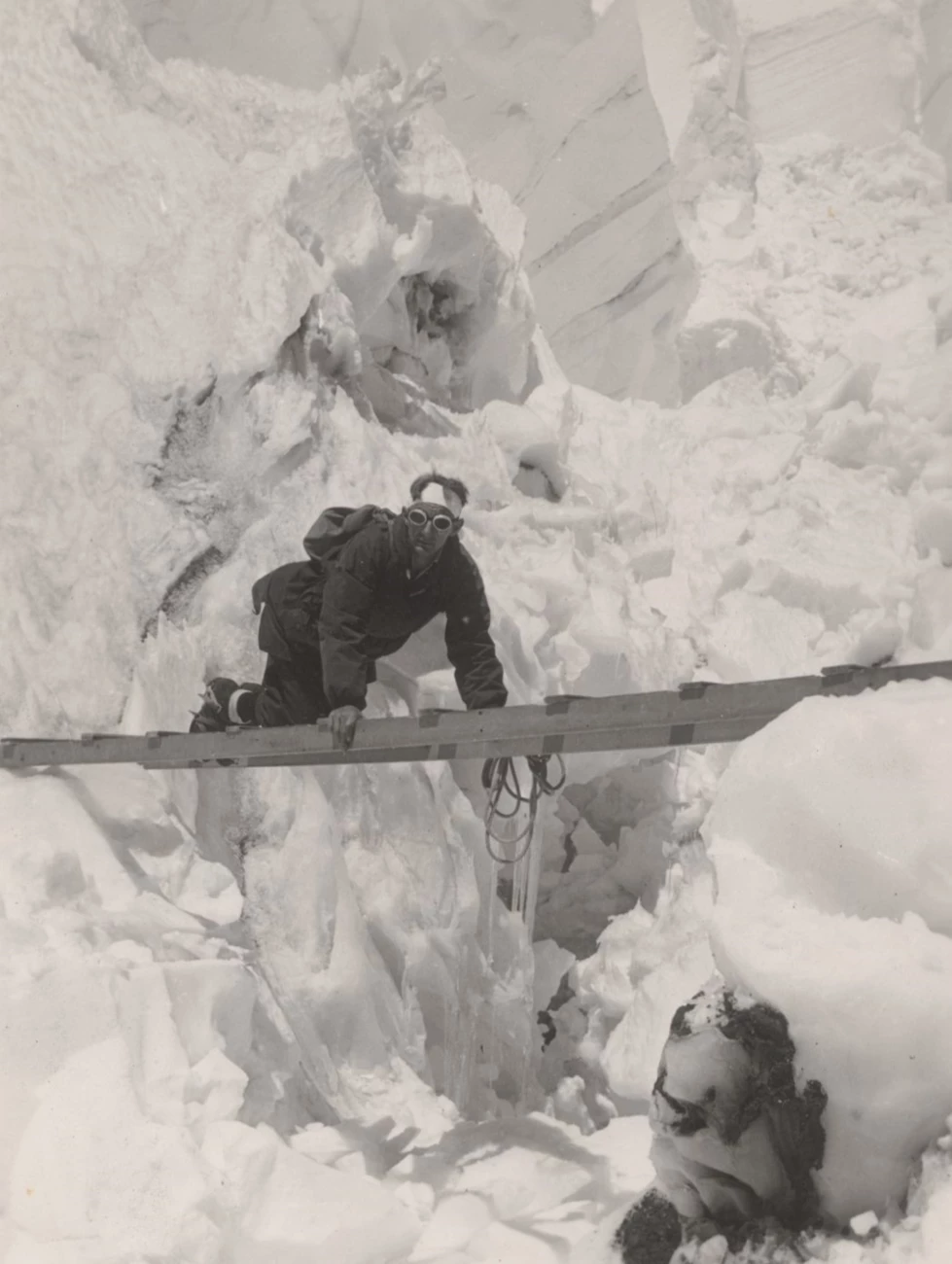
On September 13, 1937, Dodge became junior park naturalist in the branch of education at the NPS Southwestern National Monuments (SWNM), and the family moved to Coolidge, Arizona. That month’s SWNM report noted, “Dodge comes to us with general naturalist experience at Mt. Rainier and Grand Canyon national parks, is an accomplished photographer, and has had considerable success along the lines of writing and editing. His work will deal principally with the biological aspects of the Southwestern Monuments educational program.”
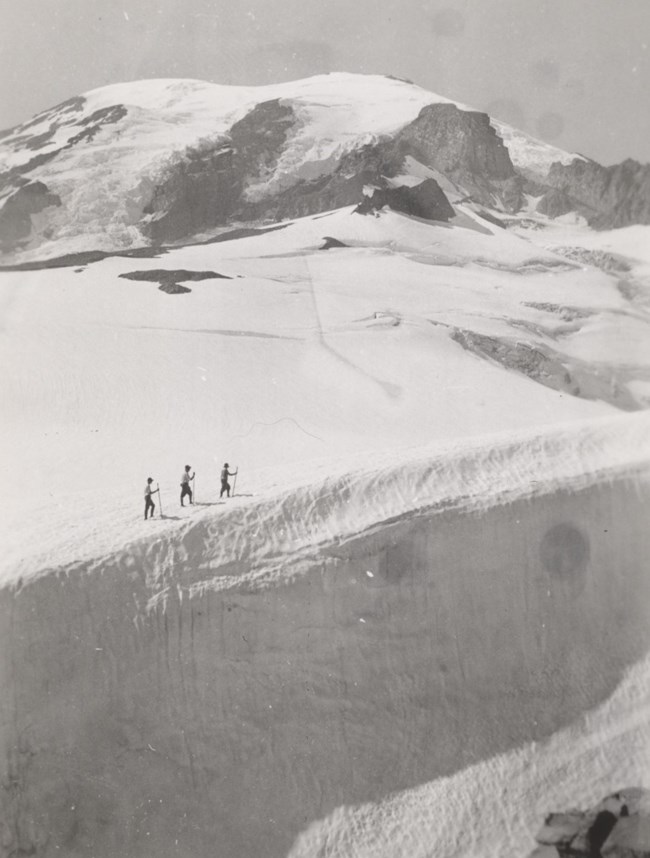
Dodge traveled to the various monuments over the next few years, taking on many different tasks. His family often went with him. In October 1937 he was at Saguaro National Monument, where roving ranger Jim Brewer noted, “Natt showed me the boundaries and I could hardly see the monument for all the fine ‘Game Reserve’ signs he had posted. If a hunter gets in here, it won't be by mistake.” Dodge also developed exhibits, prepared informational and publicity materials, collected specimens, took photographs, wrote reports, guided at some of the monuments, banded birds, answered correspondence, managed the library, and gave talks to community groups. Recalling his early career in honey, in 1937 he wrote “Fighting Forest Fires with Honey” for Gleanings in Bee Culture.
Dodge continued to take photographs for the NPS and his personal interests. He also began shooting motion pictures for the NPS. As Dodge recalled in a 1962 oral history interview,
When I first went to Casa Grande back in the fall of 1937, I went in to one of the local merchants and asked for some credit, and the merchant [blew] up and he said, "You're just another man out there at that old mud house eating out of the taxpayer's trough, and I'm not about to extend credit." And I realized that this man right in Coolidge didn't know that that was the headquarters for 27 national monuments in the Southwest. He thought that this was just the staff of this one national monument.
As a result, with my personal movie camera I started taking shots of the various national monuments and their major features, and developed a reel called "The National Parks and Monuments of the Southwest.” I showed that first at some of the service organizations in Coolidge. It became better known and I showed it to other organizations in Coolidge, to organizations in Phoenix, Tucson, Tempe, Mesa, and many other towns. It became a very popular film, so I expanded it and eventually made four films: one on the national parks and monuments of Arizona, one on the national parks and monuments of Utah, and similar ones for Colorado and New Mexico. I also made a film that runs about 45 minutes on national parks wildlife, and a similar one on national parks wildflowers, which brings out the value of protecting natural features in a national park, both animal life and plant life.
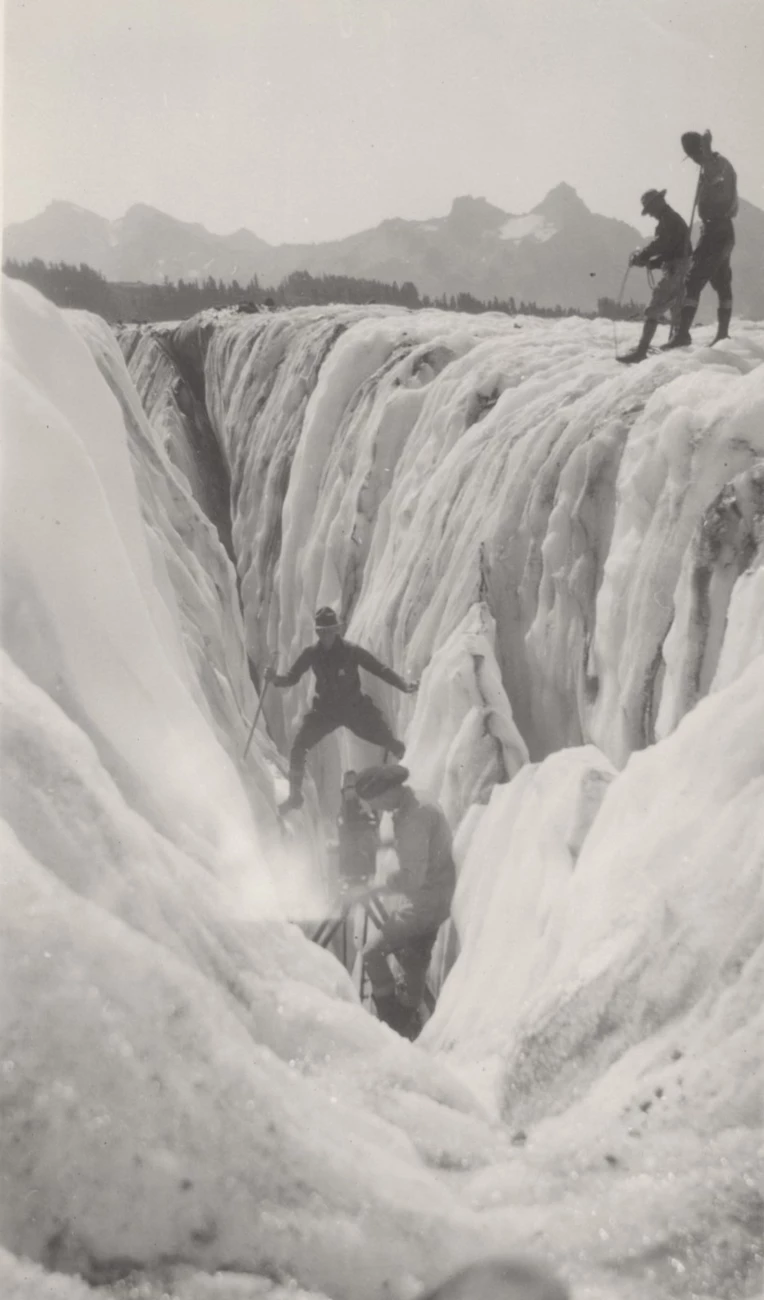
Dodge shot all the Southwest footage for the wildlife film but obtained photos from others around the country for the rest of the film. He also created other films featuring southwestern monuments, the desert ecosystem, and Native Americans. Almost three decades later, Dodge was still proud of his work, stating,
Now these films are all worn out. They're amateurish. They don't stand up under present-day standards of quality, but during those years when the Park Service was little understood, had practically no way of publicizing itself, of bringing its reason for existence to the general public, particularly the school children, I feel that these films did an enormous amount of good public relations for the Service, and I look upon them and the results of them as my greatest contribution.
In November and early December 1941 Dodge was sent to Carlsbad Caverns National Monument to study public concerns about how the guiding through the cave, described as “more of a police type of guiding than it was any informational or interpretive,” was handled. Dodge recommended a naturalist position for the park, which led to the start of the park’s interpretive program.
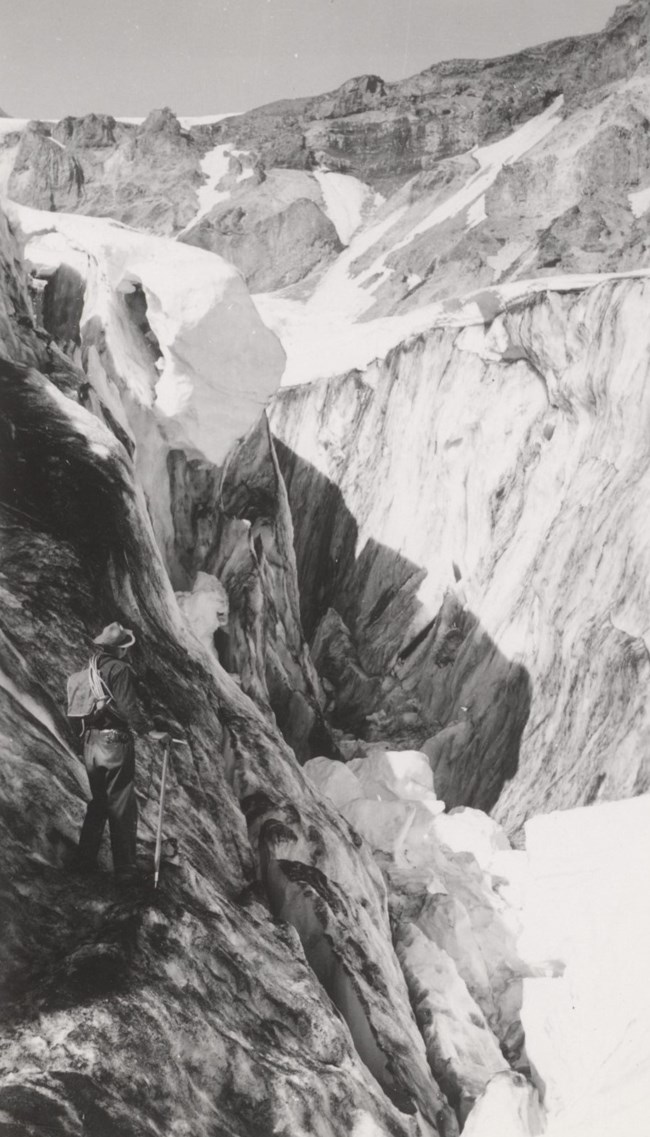
In October 1942 management of the SWNM moved to the Region III office, as a war-time economy, and the Dodges relocated to Santa Fe, New Mexico. Natt Dodge retained his position as associated naturalist for SWNM with the move. However, soon after his supervisor, Dale King, left to fight in World War II. Dodge became acting naturalist for SWNM in his absence. In January 1943 he added the duties of acting regional naturalist to his SWNM duties. He also became responsible for the regional library at that time. His mother, a retired junior high school librarian, volunteered to manage the library. She worked 8-hour days, six days per week, for three months each winter.
In summer 1945 Dodge had an acting assignment as NPS chief naturalist. Finally in 1946 Dodge went from acting regional naturalist position to regional naturalist position. He held that position until his retirement in 1963.
Dodge wrote or co-wrote more than a dozen books. His photographs illustrate many of them. Examples include Poisonous Dwellers of the Desert (1949), Flowers of the Southwest Desert (1954), Saguaro National Monument, Arizona (1957), and Organ Pipe Cactus National Monument (1964). Together with naturalist Herbert S. Zim, Dodge wrote the Golden Guides The American Southwest: a Guide to Wide Open Spaces (1955), and The Pacific Northwest: A Guide to the Evergreen Playground (1959). He also contributed to The Book of the American West (1963). He created a series of books featuring his color photographs, including The American Southwest with more than 400 Subjects in Full Color (1956), 100 Desert Wildflowers in Natural Color (1963), and 100 Roadside Wildflowers of the Southwest Uplands in Natural Color (1967). The Natural History of White Sands National Monument and Rhymes of a National Park Naturalist and Other Selected Verses were published in 1971.
Many of Dodge’s books have been reprinted through multiple editions. Throughout his career he contributed articles and illustrations to journals; magazines (including The Colorado Forester, Desert Magazine, National Parks Magazine); and NPS newsletters. His description of Guadalupe Mountains National Park was printed as part of the Congressional Record in 1967.
Natt N. Dodge died on December 12, 1982, in Santa Fe. The NPS History Collection named him an NPS Eminent Photographer in 2023. In his memory, Colorado State University offers the Natt N. Dodge Scholarship in Natural Resources to incoming freshmen students majoring in biology, zoology, or botany with interest in conservation and ecology, with preference given to students who plan to work for the NPS or US Forest Service.
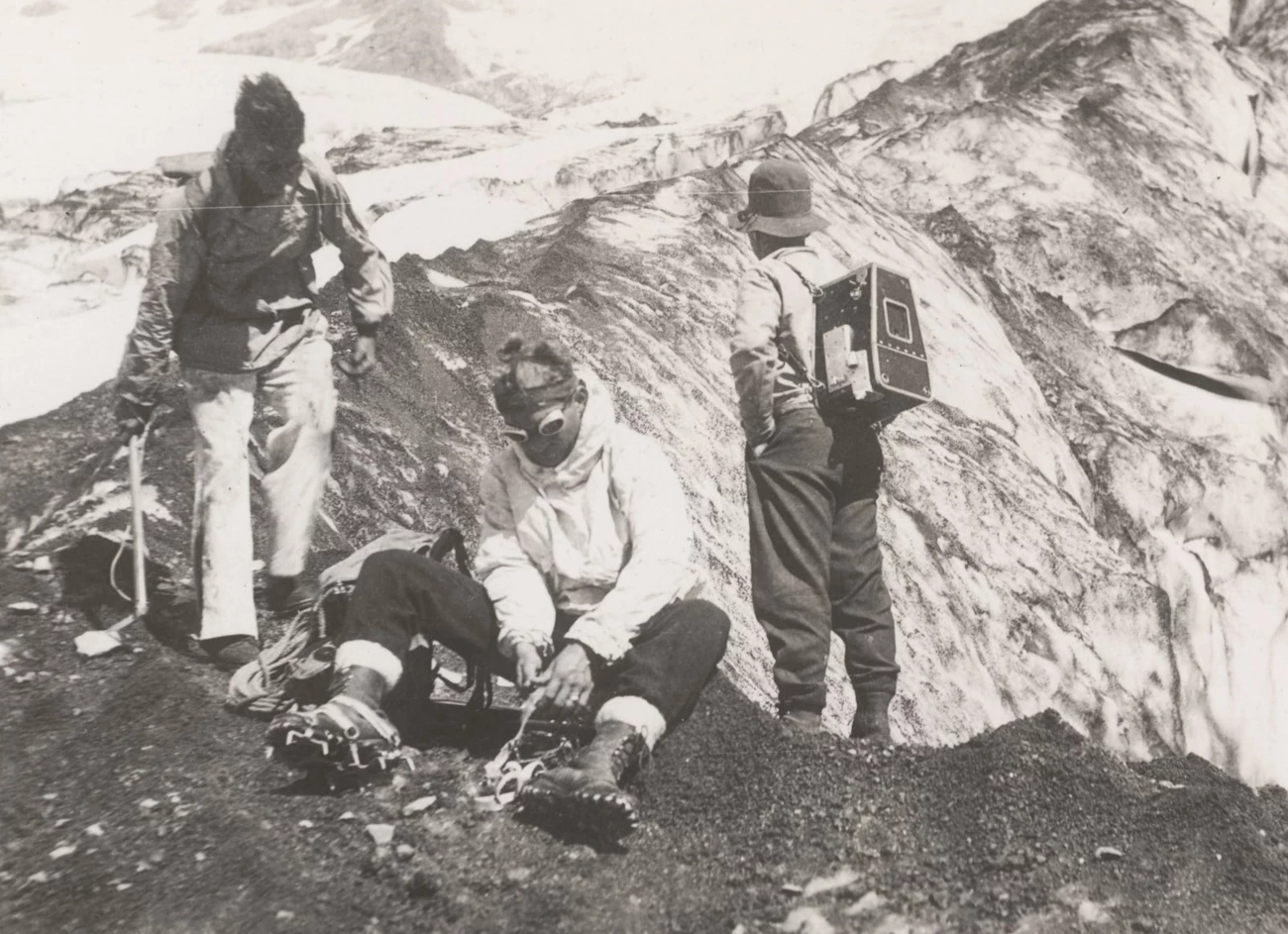
Sources:
--. (1926, November). “More Visits to Apiaries Near Seattle.” Bees and Honey, Vol. VII, No. 11, p. 272.
--. (1929, January). “Commander Byrd Takes Honey to the Antarctic.” The American Honey Producer, Vol, II, No. 11, p. 274. Accessed June 11, 2023, at https://www.google.com/books/edition/American_Honey_Producer/OdhJAAAAYAAJ?hl=en&gbpv=1&dq=%22Natt+N.+Dodge%22&pg=PA274&printsec=frontcover
--. (2011, October). “Nattalie Dodge-Bradley.” Obituary accessed on June 15, 2023, at https://www.mykeeper.com/profile/NattalieDodgeBradley/
Dodge, Natt N. (1927, December). “The Granulation Problem.” The American Honey Producer, Vol. 1, No. 9, p. 109. Accessed June 11, 2023, at https://www.google.com/books/edition/American_Honey_Producer/OdhJAAAAYAAJ?hl=en&gbpv=1&dq=%22Natt+N.+Dodge%22&pg=PA274&printsec=frontcover
Dodge, Natt N. (1937, October). “Pictures to the Editor.” Life, p. 134. Accessed June 11, 2023, at https://books.google.com/books?id=0kQEAAAAMBAJ&pg=PA134&dq=%22Natt+N.+Dodge%22&hl=en&sa=X&ved=2ahUKEwjTs5qjrLv_AhXqFlkFHUQNA3o4FBDoAXoECA4QAg#v=onepage&q=%22Natt%20N.%20Dodge%22&f=false
Dodge, Mildred (1988, June 25). Oral history interview with Polly Kaufman (HFCA 1980), NPS History Collection, Harpers Ferry, West Virginia.
Dodge, Natt N. (December 11, 1962). Oral history interview with S. Herbert Evison, NPS Oral History Collection (HFCA 1817), Harpers Ferry, West Virginia.
Moffett, Ben. (1979, January ). “SW Women’s Club Marks 40th Anniversary.” Vol. 2, No. 3, p. 8. NPS History Collection (HFCA 1645). Available digitally at http://npshistory.com/newsletters/courier/courier-v2n3.pdf
Nathanson, David. (1983, October). “Natt Dodge ‘Collection’ Donated to NPS.” Courier: The National Park Service Newsletter, Vol. 28, No. 10, p. 31. NPS History Collection (HFCA 1645).
National Park Service. (1937, September). Southwestern Monuments Monthly Report, September 1937. NPS History Collection (HFCA 1645). Available digitally at http://www.npshistory.com/newsletters/sw_mon_rpt/monthly-report_0937.pdf
National Park Service. (1937, October). Southwestern Monuments Monthly Report, October1937. NPS History Collection (HFCA 1645). Available digitally at http://www.npshistory.com/newsletters/sw_mon_rpt/monthly-report_1037.pdf
